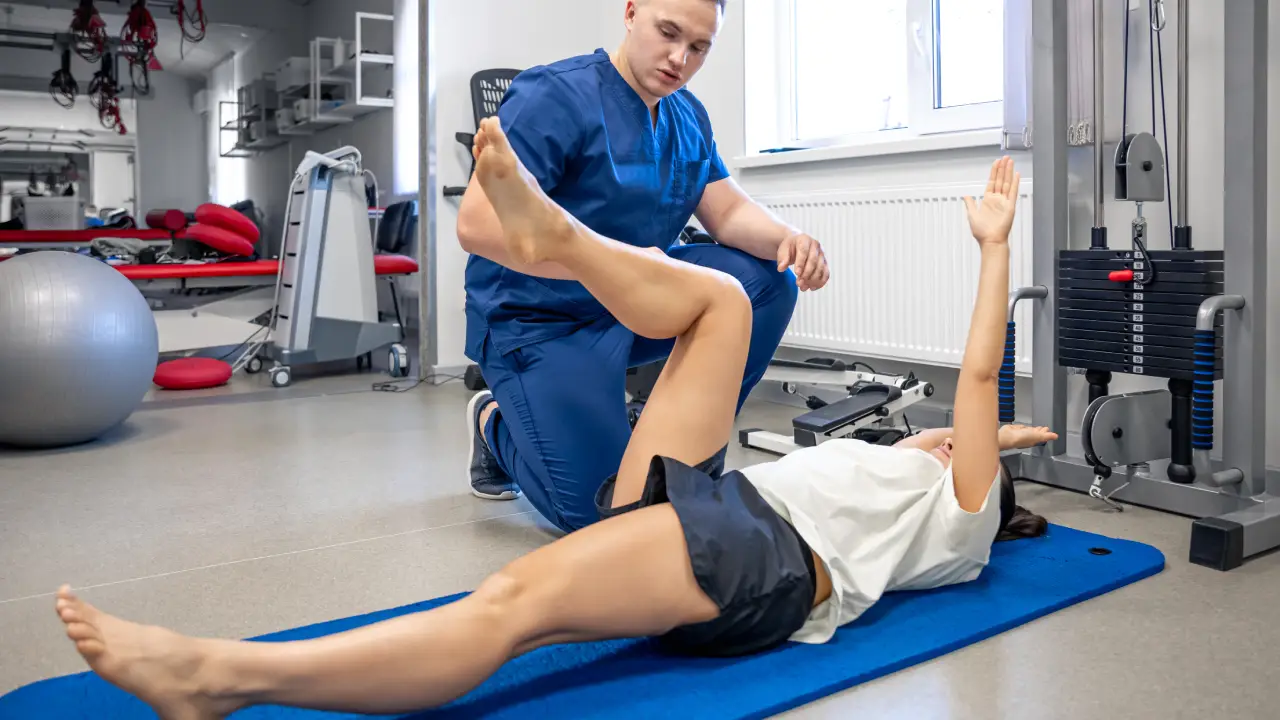
Give us a Call
(780) 801-3669

Sports injuries are common among athletes of all levels, from weekend enthusiasts to professional competitors. Injuries such as sprains, strains, ligament tears, and overuse injuries can disrupt training schedules and affect performance. Sports injury rehabilitation is more than just recovering from the immediate injury—it focuses on restoring strength, Mobility, and coordination while preparing the body for safe activity.
For residents in Beaumont, following a structured rehabilitation program can prevent long-term problems, reduce downtime, and ensure a safer return to training. The right approach addresses weak areas, corrects movement patterns, and gradually rebuilds Confidence in physical performance.
A carefully planned sports injury rehabilitation program sets the foundation for returning to full activity without compromising recovery.
Returning to training too soon or without guidance increases the risk of re-injury. Research shows that inadequate recovery or skipping rehabilitation steps often leads to recurring injuries or chronic discomfort. A structured approach to sports injury rehabilitation strengthens the injured area, enhances muscle support, and retrains the nervous system for proper movement.
By addressing both the injury and the surrounding muscles, rehabilitation improves overall body mechanics, making future physical activity safer. Gentle movement and complete training at every stage of recovery reduce vulnerability and support sustainable athletic performance.
Jumping back into intense activity is one of the most common mistakes during rehabilitation. A gradual approach allows tissues to adapt to stress without being overloaded. Begin with low-impact exercises, monitor responses, and increase intensity in small increments. For example, a runner recovering from a hamstring strain may start with walking, progress to light jogging, and eventually return to sprinting. Staged progression is essential for effective sports injury rehabilitation.
Every injury affects individuals differently. A personalized rehabilitation plan designed by a physiotherapist ensures exercises target specific weaknesses while avoiding movements that may cause setbacks. For instance, shoulder injuries often require a combination of strengthening, stretching, and Posture correction. Personalized strategies make sports injury rehabilitation safer and more efficient.
Injuries rarely occur in isolation. Supporting muscles help stabilize joints and prevent future problems. After an ankle sprain, exercises for the calves, shins, and glutes are crucial for improving balance and reducing strain on the ankle. Strengthening surrounding muscles is a vital aspect of long-term sports injury rehabilitation.
Reduced flexibility increases stress on injured tissues, which can slow recovery or cause new injuries. Incorporating Mobility work and targeted stretches ensures the body moves efficiently. Yoga, dynamic stretches, or sport-specific flexibility routines are often included in sports injury rehabilitation to maintain functional movement.
Incorrect movement patterns are a major contributor to recurring injuries. Whether lifting weights, running, or performing sport-specific drills, maintaining proper form protects healing tissues. A focus on technique ensures exercises support recovery rather than creating new strain, which is a fundamental part of sports injury rehabilitation.
Injury often affects the body’s awareness of joint positioning, known as proprioception. Incorporating balance exercises—like single-leg stands, wobble boards, or agility drills—helps retrain the nervous system. This step is crucial for sports injury rehabilitation, especially for ankle, knee, or wrist injuries, as it reduces the likelihood of missteps or falls.
While protecting the injured area, maintaining overall fitness is vital to avoid detraining. Low-impact exercises such as cycling, swimming, or using an elliptical trainer keep the heart and lungs strong without overloading the injury. Cardiovascular conditioning complements sports injury rehabilitation, supporting a smoother return to sport.
Managing pain and inflammation can speed recovery. Therapists commonly use ice packs, heat therapy, compression, and manual therapy during sports injury rehabilitation. These techniques help control discomfort and promote healing while supporting a gradual return to activity.
Nutrition is a key element of recovery. Protein supports muscle repair, calcium and vitamin D strengthen bones, and electrolytes maintain joint and muscle function. Hydration keeps tissues flexible and reduces fatigue. A diet tailored to recovery goals complements the physical aspects of sports injury rehabilitation.
Pain, swelling, or discomfort may indicate the body is under stress. Ignoring these warning signs can cause setbacks. Athletes should adjust activity intensity, seek advice, or rest as needed. Listening to the body ensures a safer, more effective sports injury rehabilitation process.
Regular assessments by physiotherapists or rehabilitation specialists allow for adjustments to exercise routines and early detection of potential problems. Ongoing guidance is critical for ensuring sports injury rehabilitation progresses efficiently and safely.
Structured rest is just as important as active training. Recovery periods, active recovery sessions, and adequate sleep allow tissues to heal and adapt to training stress. Athletes who incorporate recovery strategies prepare their bodies for future activity, a key part of sustainable sports injury rehabilitation.
Re-injury can slow progress and create frustration, but careful planning and professional guidance can prevent setbacks. By following these 12 strategies, athletes in Beaumont can safely return to training and build Confidence in their performance. For those seeking comprehensive support in sports injury rehabilitation, Aim Physiotherapy and Wellness provides guidance, personalized programs, and professional monitoring to help clients regain strength and return to activity safely.